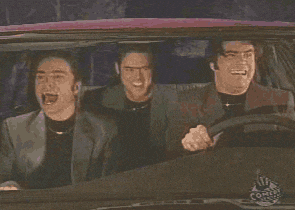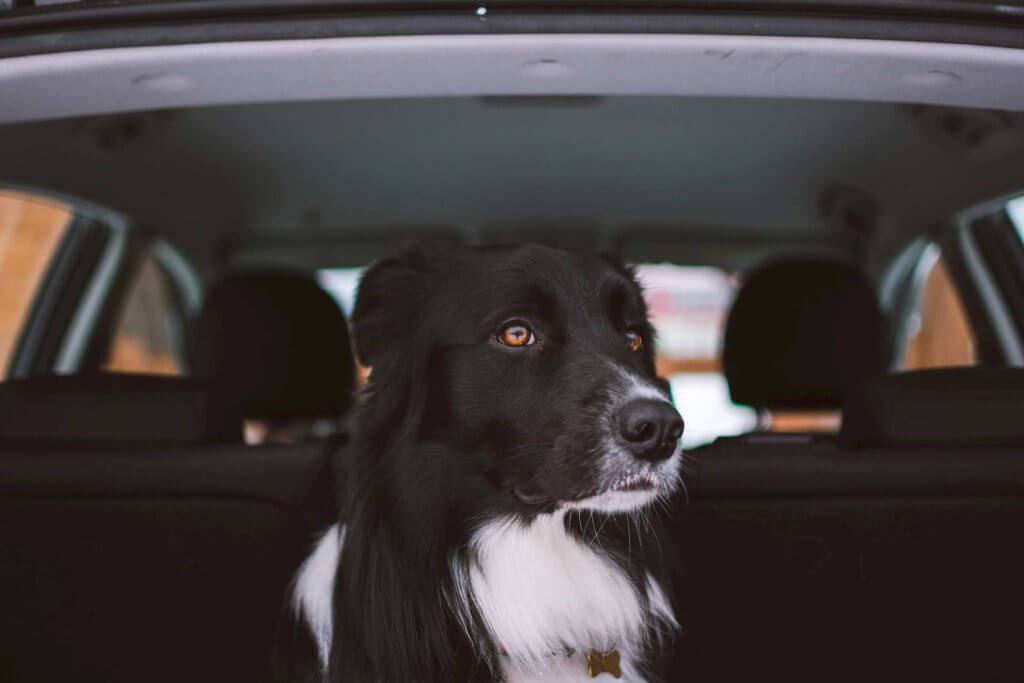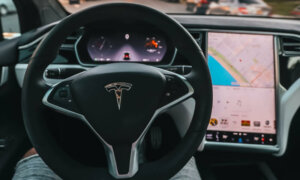If I asked you what’s the next appliance on your shopping list, what would you say? A TV? Laptop? New smartphone or gaming console? I doubt it would be a smart fridge. It wouldn’t be my first choice either. But it took a TV show like Modern Family to remind me how artificial intelligence can transform a traditional, utilitarian object like a fridge. As I laughed out loud at a fridge’s AI – Bridget – and Mitch’ duet on Lady Gaga’s “Shallow” or Bridget’s readiness to gossip and prepare Mitch a watermelon snack, I realized that a smart fridge would probably be a welcome late-night DJ, a supportive friend, and therapist at the end of a hard workday. And if a fridge can do so well, imagine what a complex machine like a car could do?
A “Bridget” could make ice on the weekends, when you indulge with a glass of gin, suggest a recipe with leftover veggies and keep you on your toes in “personal trainer mode”. But being rather bulky and fixed, you’d enjoy her company only when you’re at home.
Let’s be honest now: she’d do a terrific job in this lockdown, but even now, she wouldn’t spend half of her day with you as your car would. Ah… your sweetheart, your baby girl. Dependable, classy or fierce, fast and furious – she’d give Bridget a run for her money. Probably your partner, too, who’d be shocked at her willingness to anticipate your needs, prevent any misgivings, and join in the fun.

How would that work?
Simple, really. Both from a creative and technical point of view.
So far, you’ve gone through business calls, family check-ins, love declarations and more while behind the wheel. Your car has seen you happy, bored, stressed, sad, worried and in love. She’s been there for you as you made your way to your first date, your dream vacation or your new job. Is it really that hard to imagine her as an active part of your personal life?
Imagine what your _________ (fill in the blank with her name) could do with all the information she’s exposed to every day if she could see, detect, track and take action automatically, not at your prompt?
PREVENT
Like saving your life, your passengers’ lives and even fellow drivers’. In 2018, almost 3,000 people died in car crashes caused by distracted driving. Not all of them were drivers, though; no, there were 605 passengers, 400 pedestrians and 77 bicyclists.
Other alarming texting and driving statistics? Using a cell phone is responsible for around 1.6 million crashes each year, with 1 in every 4 accidents are caused by distracted driving.
Not dreadful enough? Then, let’s look at the number of people injured in such cases – 400,000. That’s four times the number of people able to fill the huge AT&T Stadium. Lives endangered by one main bad habit: texting.
If talking to the passengers or taking a sip of your coffee is a moment’s action, which doesn’t take the driver’s eyes from the road, texting is a 5-second distraction. A distraction that messes up with the driver’s sight.

Drowsiness plays a role, too. If you have control over your actions in the first case, in this instance your own body betrays you. And it happens more often than you’d believe, too. It seems that 1 in 25 adult drivers (aged 18 or older) fall asleep which, unfortunately, makes the 6,400 U.S. deaths annually caused by drowsy driving less of a surprise.
The rule would be: don’t drive if you feel exhausted, you’ve taken some medication which could make you sleepy, or if you have a diagnosed sleeping disorder. Or, at the very least, make sure there’s an adult passenger that can keep you awake if the ride is unavoidable.
But what if you’re alone in the car or you’re driving with just the kids or your pet in the back? They could fall asleep before your own exhaustion makes its presence felt. But a car is never sleepy. It’s not alive, after all. The good news is, that in this day and age, you don’t have to be alive to be smart.
A smart car also comes in handy when the kids or pets are not sleepy if the driver is in the car, but very much awake and alone in the vehicle. If you haven’t seen a pet left behind, in the car, then you’re in for a rough awakening. This is actually a frequent occurrence, so frequent in fact that there are “how to” articles instructing you on ways to react to such cases.

The Humane Society dedicates a page on the risks involved leaving pets in cars, especially when the car gets hot. High temperatures can cause irreparable organ damage and even death. You can call the authorities, try to track the car’s owner, but wouldn’t it be better if the driver itself would not forget about their pets or know the dangers involved? Wouldn’t it be better if the car itself would warn them against it?
Isn’t that a bit of a stretch? you may ask. Not really. Pet detection and tracking technology part of vital and cabin analytics is no longer part of an ideal future. It is part of the present.
And that’s just the start.
ANTICIPATE
Your baby on four wheels could do much more than just prevent disasters. It could anticipate your needs like a personal assistant or therapist. It could make last-minute reservations for a work dinner or date, depending on your and their location, online reviews, dietary preferences and more.
Just by looking through your calendar, it could take video meetings, set up new ones and reply to emails on the go, by using Smart Reply-like services triggered by certain keywords or email templates set for specific occasions and contacts.
By using a combination of sensors and technologies, your car could actually log the instances when you looked sleepy and not just alert you to keep your eyes on the road or pull over to take a break but take measures to improve your sleep. It could set reminders to go to sleep earlier every night, schedule a spa session or coordinate with your phone to cut down on your use of social media after a certain hour.
Ready to Talk To Your Car? Good, Because Now She’s All Eyes and Ears
Details that might slip your loved ones’ attention, could be cataloged by your car and used to improve your well-being. After all, you might put on a brave face for those you love, but in the safety of your car, when you’re alone with her, you’ll allow yourself to be worried and sad. Instead of just going through the motions, your car could get you out of a funk by playing your favorite song or audio of your kids’ voices. When you’re anxious, she could remind you of the things that really matter. How? By playing your go-to podcast or by reading out loud your own Notes. / change lighting
And when you’re feeling like you’re on top of the world? Your car could capture that joy in photo or video form and send it directly to your loved ones, creating memories for a lifetime.
As for the other occupants? Your car could read their moods, through emotion detection, and play their go-to TV show or cartoon, keeping them occupied until you reach your destination. Endlessly resourceful, she could use pet detection and tracking to understand what’s going on with your best friend in the back. Bored and restless? She could lift their mood by handing them their favorite toy. Energetic and distracting? She could keep them from coming to the front by enabling a next-gen pet barrier.
JOIN IN
If you thought all this couldn’t get any better, imagine this: a car that could break the fourth wall. Just like Deadpool in the movies. Only instead of watching a character take a break from the action to talk to you, you’d witness your car join in the fun, while keeping you safe on the road.
How would that look? Just like Bridget in “Modern Family”, your car could let loose by inviting you to a round of karaoke.

Struggling to get in some time on Duolingo? She could help you out, learning, spelling, and pronouncing foreign words with you.
Before you figured out how to get rid of your nerves before a job interview, your car could step in. She could monitor your vital signs and not only anticipate what you need – perhaps a meditation session – but join in, helping you breathe in and out to calm your heart rate.
On the opposite spectrum, she could create memories with you whilst on the road. She could live-stream your road trip, switching focus from the driver to the occupants, depending on who is active on camera. Your car could create digital postcards of and for your family, placing AR filters and made-up backgrounds. You wouldn’t need to take out your phone for that, distracting you from the road. It also wouldn’t require spending precious minutes in post-production to get a montage out.
And if you’re a hopeless romantic? Your car could set up a night to remember. Imagine a stargazing session with your loved one from inside the car, as your seats retract until you can lay perfectly on your back. Or maybe you’re planning a movie night? Instead of looking through the transparent headliner at the stars, you could be watching a classic, as your car projects it right there. Adaptive interiors are here and they will only get more sophisticated with time, as your baby learns what you like and need.
Speaking of time, you’re probably thinking all this sounds like a dream because… it actually is. And this is the one instance where I’m happy to say you’re wrong. Not only is all this in the realm of possibility, but the technology exists. Right now.
Oh yeah, for the first time ever (as far as I know, please feel free to correct me if I’m wrong) a company from the auto industry announced that the cars currently in the making will come out with the technologies that might soon make these scenarios possible.
Xperi’s driver monitoring solution is able to detect a distracted or drowsy driver and keep him safe behind the wheel using visual cues (face detection and tracking, head position, eye gaze, eyelid opening, etc). The company’s DMS is currently in production and is shipping in five light commercial vehicles from three different auto brands.
Their OMS (occupancy monitoring solution) extends the monitoring of the driver to the occupants (people and pets), focusing on their moods and behavior, and anticipates their needs (through generic object detection and tracking, emotion detection, etc.).
Fifteen new vehicle design-ins with occupancy monitoring and driver monitoring technologies are estimated to go into mass production starting with 2021 and are expected to continue over a multi-year production life.
Best of all, Xperi’s in-cabin solutions can be tailored by car manufacturers to fit their design needs and creative use-cases. A car that turns into a moving cinema? One that acts like a portable office? Or a vehicle that’s a therapist on the go? It’s all up to the manufacturer’s path to fully-autonomous vehicles and your imagination, of course!
After all, there is no place like home. And… there is no place like your car.
Follow TechTheLead on Google News to get the news first.























